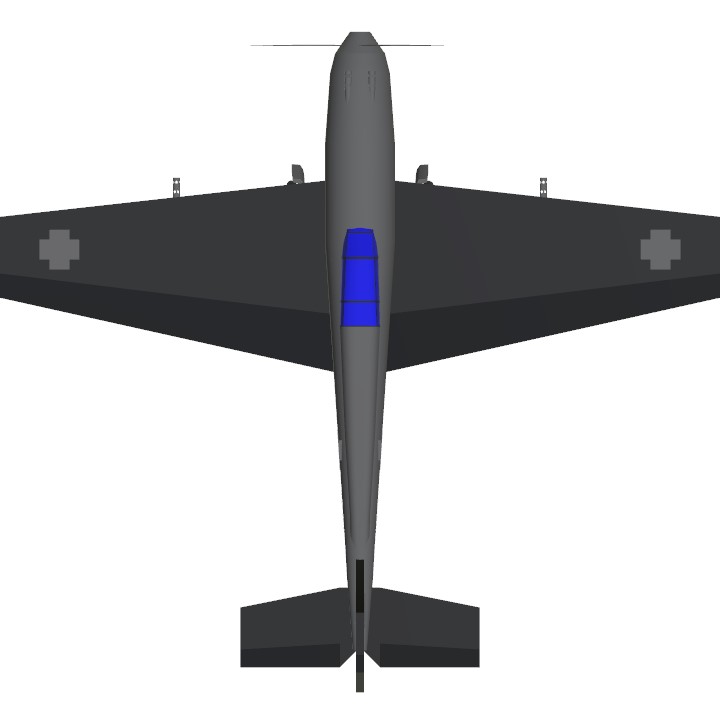Thanks to
@Hahahahaahahshs
There is no AG keys so feel free to modify.
History
BF-!09-E
In late 1938, the Bf 109E entered production. To improve on the performance afforded by the 441–515 kW (600–700 PS) Jumo 210, the larger, longer Daimler-Benz DB 601A engine was used, yielding an extra 223 kW (300 PS) at the cost of an additional 181 kg (400 lb). A much bigger cooling area was needed to disperse the extra heat generated by the DB 601, and this led to the first major redesign of the basic airframe. Enlarging the existing nose-mounted radiator sufficiently to cool the engine would have created extra weight and drag, negating some of the performance gains afforded by the increased power, so it was decided to move the main radiators to the undersurfaces of the wings immediately outboard of the junction of the wing root and wing panel, just forward of the trailing edges' inner ends, leaving the oil cooler under the nose in a small, streamlined duct. The new radiator position also had the effect of counterbalancing the extra weight and length of the DB 601, which drove a heavier three-bladed Vereinigte Deutsche Metallwerke (VDM)-made propeller.


To incorporate the new radiators, the wings were almost completely redesigned and reinforced, with several inboard ribs behind the spar being cut down to make room for the radiator ducting. Because the radiators were mounted near the trailing edge of the wing, coinciding with the increased speed of the airflow accelerating around the wing camber, cooling was more effective than that of the Jumo engined 109s, albeit at the cost of extra ducting and piping, which was vulnerable to damage. The lowered undercarriage could throw up mud and debris on wet airfields, potentially clogging the radiators. To test the new 1,100 PS (1,085 hp, 809 kW) DB 601A engine, two more prototypes (V14 and V15) were built, each differing in their armament. While the V14 was armed with two 7.92 mm (.312 in) MG 17s above the engine and one 20 mm MG FF in each wing, the V15 was just fitted with the two MG 17s mounted above the engine. After test fights, the V14 was considered more promising and a pre-production batch of 10 E-0 was ordered. Batches of both E-1 and E-3 variants were shipped to Spain for evaluation, and first saw combat during the final phases of the Spanish Civil War.
E-3
To improve the performance of the Bf 109E, the last two real prototypes (V16 and V17) were constructed. These received some structural improvements and more powerful armament. Both were the basis of the Bf 109 E-3 version. The E-3 was armed with the two MG 17s above the engine and one MG FF cannon in each wing. A total of 1,276 E-3 were built, including 83 E-3a export versions.

SOURCE. wikipedia
Specifications
Spotlights
- Zaineman one year ago
- Hahahahaahahshs one year ago
General Characteristics
- Predecessor BF109-e
- Created On iOS
- Wingspan 29.6ft (9.0m)
- Length 27.1ft (8.2m)
- Height 11.5ft (3.5m)
- Empty Weight 4,475lbs (2,029kg)
- Loaded Weight 6,259lbs (2,839kg)
Performance
- Horse Power/Weight Ratio 0.159
- Wing Loading 28.6lbs/ft2 (139.5kg/m2)
- Wing Area 219.0ft2 (20.3m2)
- Drag Points 1688
Parts
- Number of Parts 149
- Control Surfaces 7
- Performance Cost 510







Thanks to
@Hahahahaahahshs
for all the help
@Noob101 hm pretty simplistic
7.95/10
@ComradeInCommune rating out of 10 .
@intruder72 Rating out of 10
@Zaineman what do you think about the description?
@Zaineman rating
@Pilotgoose
@Randomplayer
@intruder72
seconds
@sempaimemero
@McChezborger
@Graingy